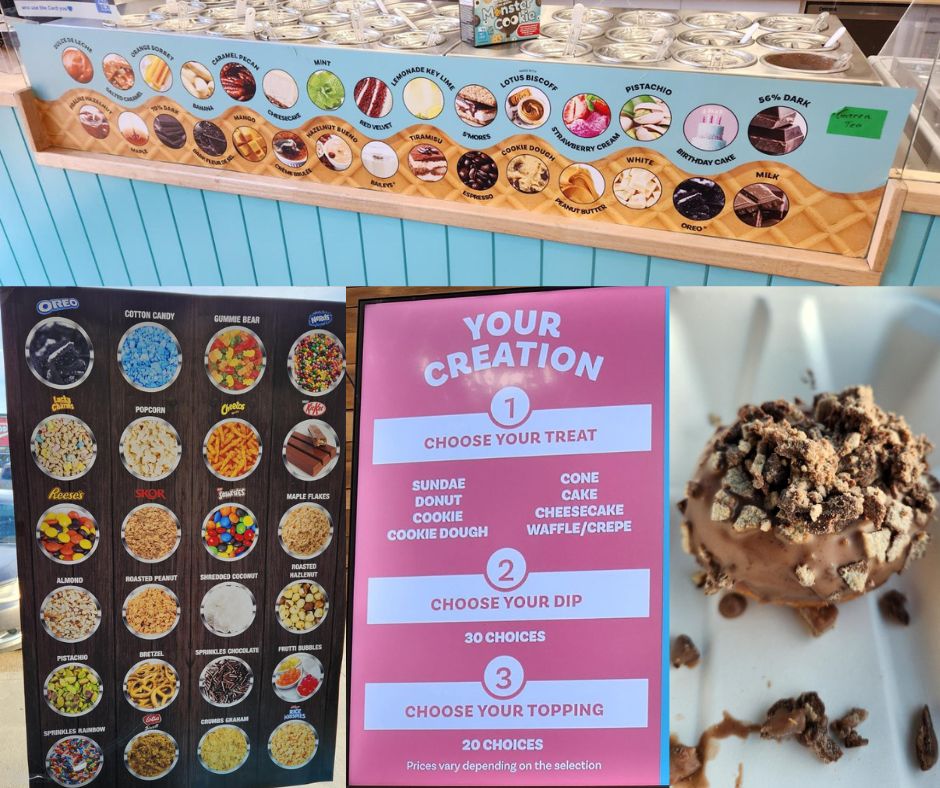Yesterday, my wife and I tried a new food place where they serve… well, I can’t even explain it. And that’s the point of this story:
Desserts?
First, we have the choice of 8 treats.
Then, we need to choose a dip. There are 30 choices.
Finally, we get to pick our toppings. Another 20 choices.
It took us longer to decide what we wanted than to eat the thing. (It was delicious, by the way.)
Do I take a hazelnut praline with chocolate sprinkles, or is that too much? Should I replace the sprinkles with Oreos? Or maybe KitKat? Yeah, KitKat. But that won’t go well with the hazelnut praline. Maybe a cookie dough dip? That would go well with the maple flakes.
Wait, Gummie bears!
If I had to make these choices online, I would’ve closed my tab and walked away, but we were there, already trying to make a decision and the guy behind the counter was very friendly and helpful.
It was a classic case of choice overload, and I was on the verge of walking out. I’m sure many of you have been in a similar situation.
There are a few marketing tactics you can use to handle choice overload:
1: Online sales: Give three choices—no more, no less. If your product sells for $50, you make option one $35, but option three is $75. You’ll need to make options 1 and 2 relatively close to each other, so it’s a no-brainer for people to upgrade to option 2, but the gap between 2 and 3 needs to be so significant that option 3 feels like a Ferrari vs. option 2 Audi.
The goal is to sell the Audi, the more affordable and practical option. If you sell the Ferrari, the high-end and luxurious option, it’s a bonus.
2: In-person selling: Give 2 options. This is a story Simon Sinek told once.
A shoe salesman gave a woman 2 options. When she wanted to see a third option, the salesman asked, “Which of these 2 am I taking away?” This way, the customer would only have 2 options, and the options would get better every time he took away the one she liked least.
When you’re sitting down with a client for a kitchen remodel, do you bring a binder of options? My advice would be to leave the binder closed and hear your client out before giving any options. Once you get a feel for what they like, assuming you know the binder inside out, you can give them 2 options to choose from and remove what they don’t like every time they want to see something else. This tactic can also be applied in other scenarios, such as when selling products or services.
Try it, and let me know how it goes!

